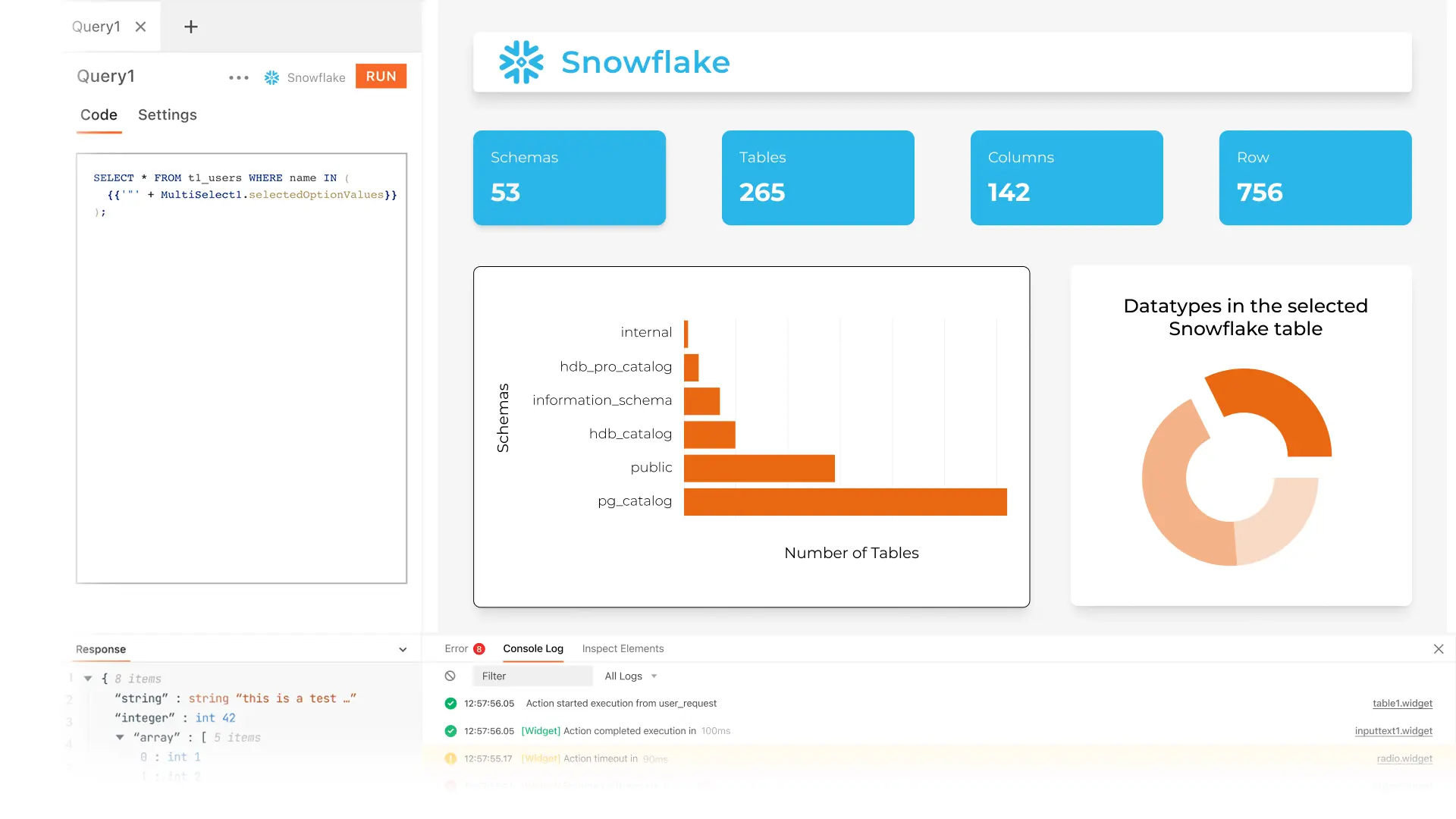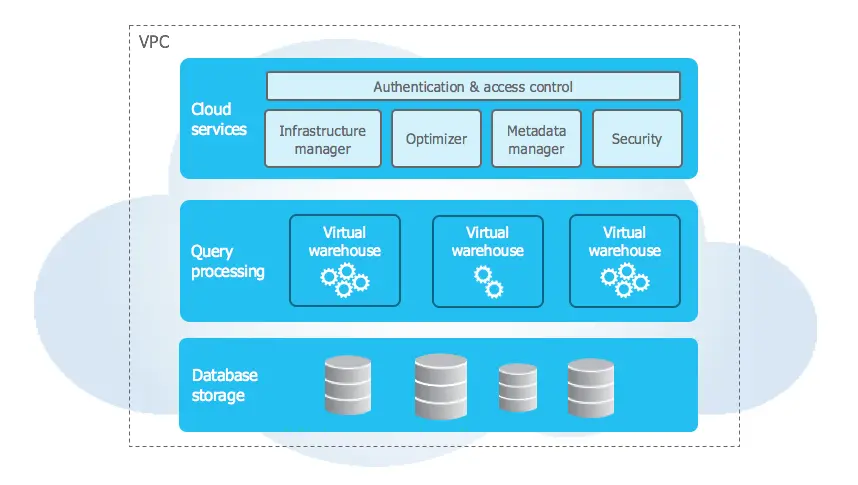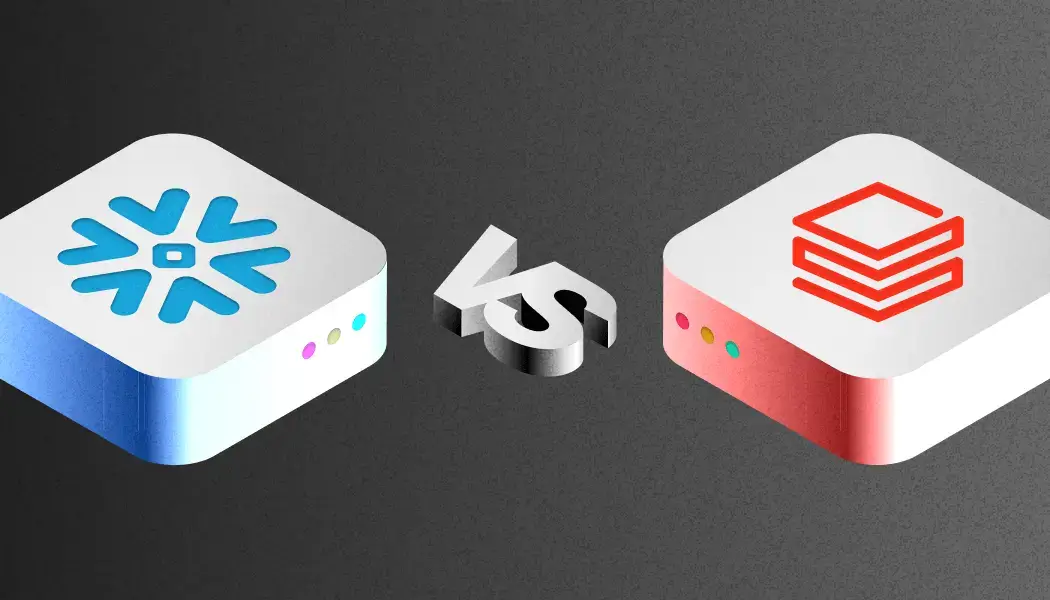
What is Snowflake: Introduction guide to the platform
Snowflake, with a market share of 21.86%, is one of the leading tools in the data warehousing market. Snowflake offers a unique cloud-based data warehouse solution, providing numerous features and flexibilities inherent to cloud-based systems.
One of the key reasons for Snowflake's popularity on the market is its usage-based payment model. This approach allows users to pay only for what they use, making Snowflake a cost-effective option suitable for companies of all sizes.
Let's get to know Snowflake in detail, exploring its features, pricing options, and ecosystem you may want to jump into.
What is Snowflake?
Snowflake is a tech company offering a cloud-based data warehouse for data storage and analytics. A data warehouse is a centralized data repository acting as the endpoint for the Extract, Transform, Load (ETL) process, allowing teams to easily access and mine data for business insights.

Snowflake architecture overview
Snowflake quickly operates with large data volumes because of its hybrid of traditional shared-disk and shared-nothing database architectures. Like the already familiar shared-disk database, Snowflake uses a central repository that can be easily accessed from all compute nodes for data.
In contrast, Snowflake's copy of shared-nothing architecture, this warehouse processes queries using massively parallel processing MPP compute clusters, allowing each node to store a portion of the entire data set locally.
This improved architecture enables both the simplicity of a shared-disk architecture and the scalability and performance of a shared-nothing system.

Snowflake: 10 key features
Snowflake provides a powerful, flexible, and efficient platform for modern data warehousing needs. It suits small businesses and large organizations working with huge data volumes, making data management and visualization easy and affordable.
1. Cloud-native architecture
Snowflake is designed from the ground up to leverage the power of cloud computing. It operates on multiple cloud platforms, including Amazon Web Services (AWS), Google Cloud Platform (GCP), and Microsoft Azure, offering flexibility and availability.
2. Cost-effective scalability
Snowflake's architecture allows for almost unlimited scalability. Separating storage and compute resources, Snowflake allows you to scale them independently and according to your business needs. This in turn ensures you only pay for what you use and can handle any workload size.
3. High performance
Snowflake's architecture has built-in features like automatic clustering and optimization that help deliver high-performance query processing. It helps handle complex queries without compromising the speed and ensuring fast data retrieval.
4. Data sharing
With its secure and seamless data sharing across organizations and platforms, SnowflakeSnowflake allows you to share live data with your partners, customers, and other stakeholders without the need for data movement.
5. Data integration
Snowflake supports a wide range of data formats, where structured and semi-structured data like JSON, Avro, and Parquet are the key ones. It also supports a rich integration list, including ETL (Extract, Transform, Load) processes, enabling smooth data ingestion and transformation.
6. Concurrency
Snowflake's multi-cluster architecture allows multiple users to run queries simultaneously without impacting performance. This makes Snowflake a great choice for companies with high concurrency needs, as it ensures users get consistent performance regardless of the workload.
7. Security
Snowflake is well-known for its robust security protocols, such as end-to-end encryption, network isolation, and advanced access controls. Snowflake complies with industry standards and regulations, ensuring your data is protected at all times.
8. Zero management
One of the key features behind Snowflake's popularity is its fully managed service model. It handles infrastructure, optimization, and maintenance tasks so users can focus on data and analytics instead of managing the underlying infrastructure.
9. Data governance and compliance
Security and governance tools within the Snowflake's ecosystem ensure sensitive data maintained by your company is protected from inappropriate access. These tools are useful when it comes to a range of operations, such as risk assessment, intrusion detection/monitoring/notification, data masking and cataloging to name a few.
In addition, Snowflake interoperates with several industry's leading data governance and security tools like Collibra, Informatica and Immuta.
10. Data marketplace
Snowflake's Data Marketplace feature allows users to access a variety of third-party data sets. This allows companies to enrich their data analytics with external data sources, providing deeper insights and more comprehensive analysis.
Snowflake ecosystem & tools
Snowflake's robust ecosystem includes a variety of tools and integrations designed to optimize the user experience and enhance functionality.
- UI Bakery: a low-code platform designed to simplify the creation of custom apps and dashboards on top of Snowflake using pre-made templates.
UI Bakery allows users to easily connect to their Snowflake databases, visually design interfaces, and automate workflows without extensive coding.
As one of the leading Snowflake GUI, the UI bakery is an excellent choice for business analysts and data teams seeking quickly generated insights and reports.

- SnowSQL: it is a Snowflake's command-line client, offering an efficient tool for users preferring scripting and command-line interactions. It supports executing SQL queries, managing Snowflake objects, and automating tasks, making it ideal for developers and advanced users.
- Snowflake connector for Python: This tool within Sbowflake's ecosystem enables developers to connect to Snowflake and perform database operations using already known Python constructs. It suits data scientists and engineers who want to integrate Snowflake with their Python-based data workflows and applications.
Snowflake: pricing breakdown
Snowflake offers a flexible and transparent pricing model based on usage, including:
1. Compute costs
These represent credits (resources) used for the following:
- Virtual warehouses are charged based on the time they are running and the size of the warehouse. Snowflake provides different sizes ranging from X-Small to 6X-Large, each with a corresponding credit consumption rate.
- On-demand pricing means you pay for computer usage on a per-second basis with a minimum of 60 seconds per query.
- Pre-purchased capacity allows users to buy compute credits in advance at a discount for predictable workloads, providing a cost-efficient option compared to on-demand pricing.
2. Storage costs
- Storage usage means Snowflake charges for the actual amount of data stored, where prices vary depending on the region.
- Time travel and fail-safe – these are extra costs that are incurred for data retained for Time Travel (up to 90 days) and Fail-safe (7 days). These features provide data recovery options and ensure data integrity.
3. Additional services
- Serverless features like Snowpipe (for continuous data ingestion) and automatic clustering. The prices for these services are based on the resources consumed.
- Professional services like support and consulting can be added based on user requirements.
Reasons to choose Snowflake over competitors
Snowflake is one of the leading data warehouse tools, though it has several competitors in the market, such as Databricks. So here is a list of reasons you may want to consider when choosing the tool you commit to:
1. Cost-efficient pricing model
- The pay-as-you-go pricing model ensures you only pay for the resources you use.
- Separation of computing and storage allows for cost optimization.
2. High performance & flexibility
- Fast query execution and data loading without altering speed, even with large datasets.
- Concurrency handling ensures consistent performance during peak usage.
- Easily scale resources up or down based on real-time demands.
- Support for diverse data types and seamless integration with existing data lakes and ETL tools.
3. User-friendly interface
- Intuitive user interface and SQL support reduce the learning curve.
- Automated maintenance and performance tuning simplify administration.
4. True SaaS offering
- In contrast to traditional data warehouses, Snowflake is a fully managed service, so it doesn't require any hardware or software installation.
5. Separation of storage and compute
- Snowflake enables independent scaling, optimizing both cost and performance according to specific needs.
Let's wrap it up
Snowflake represents a significant advancement in data warehousing technology, offering unparalleled flexibility, performance, and ease of use. Its cloud-native architecture, coupled with innovative features like separation of storage and computing and secure data sharing, makes it a powerful choice for modern data management and analytics needs.Whether you're a small business or a large enterprise, Snowflake provides the tools and capabilities to transform how you handle and leverage data.






